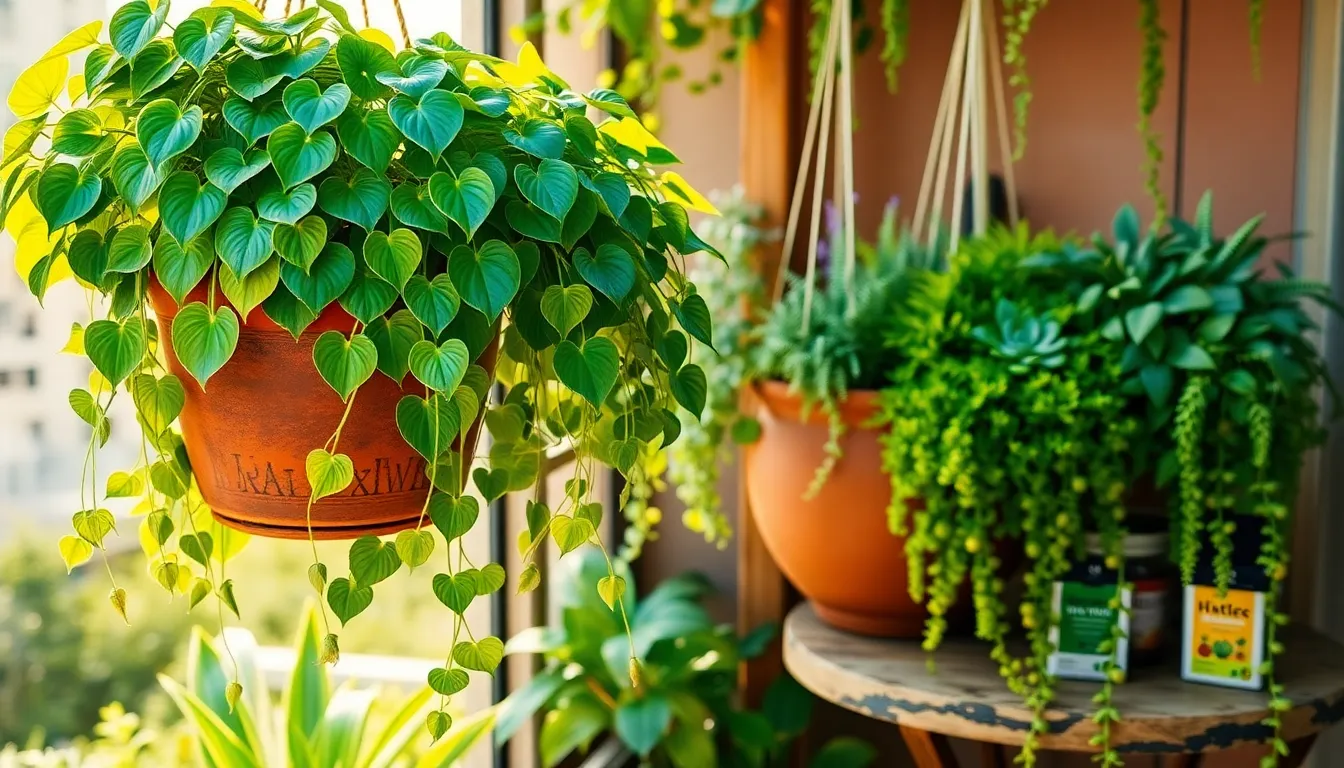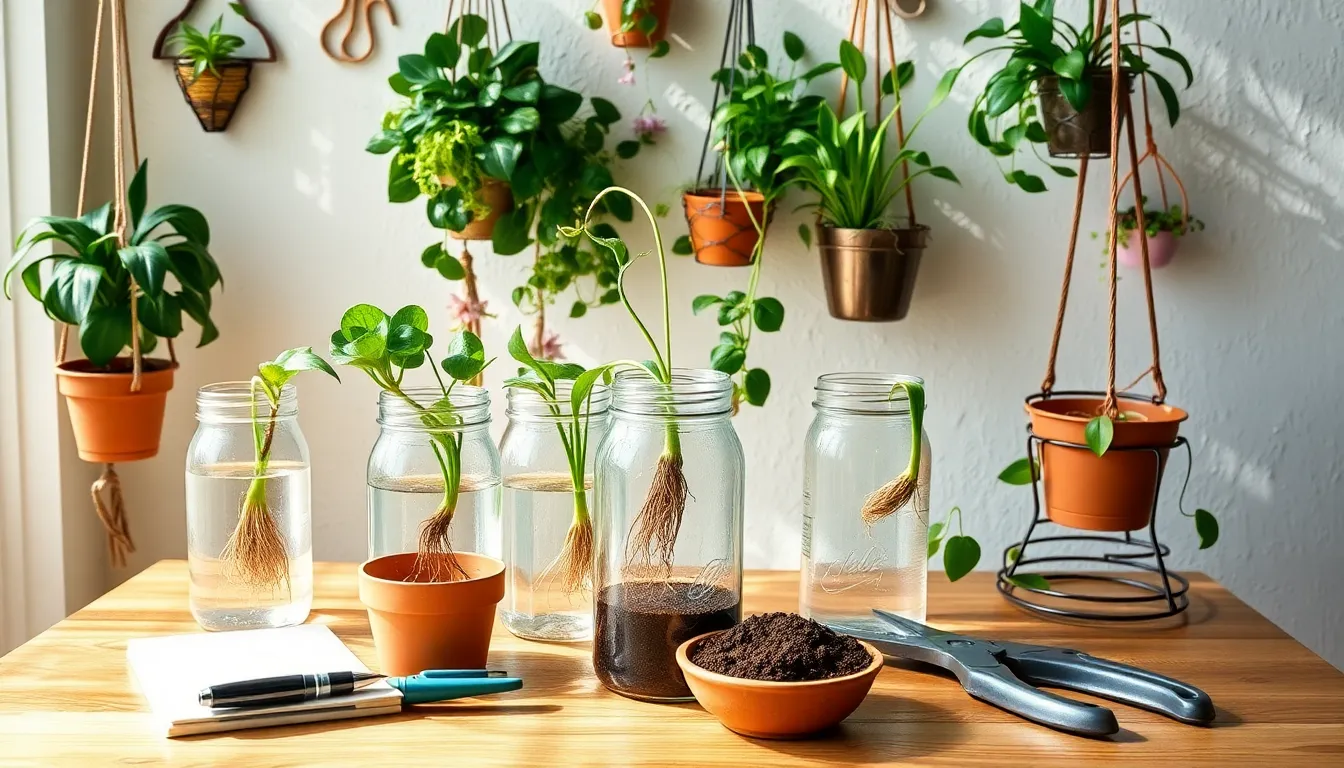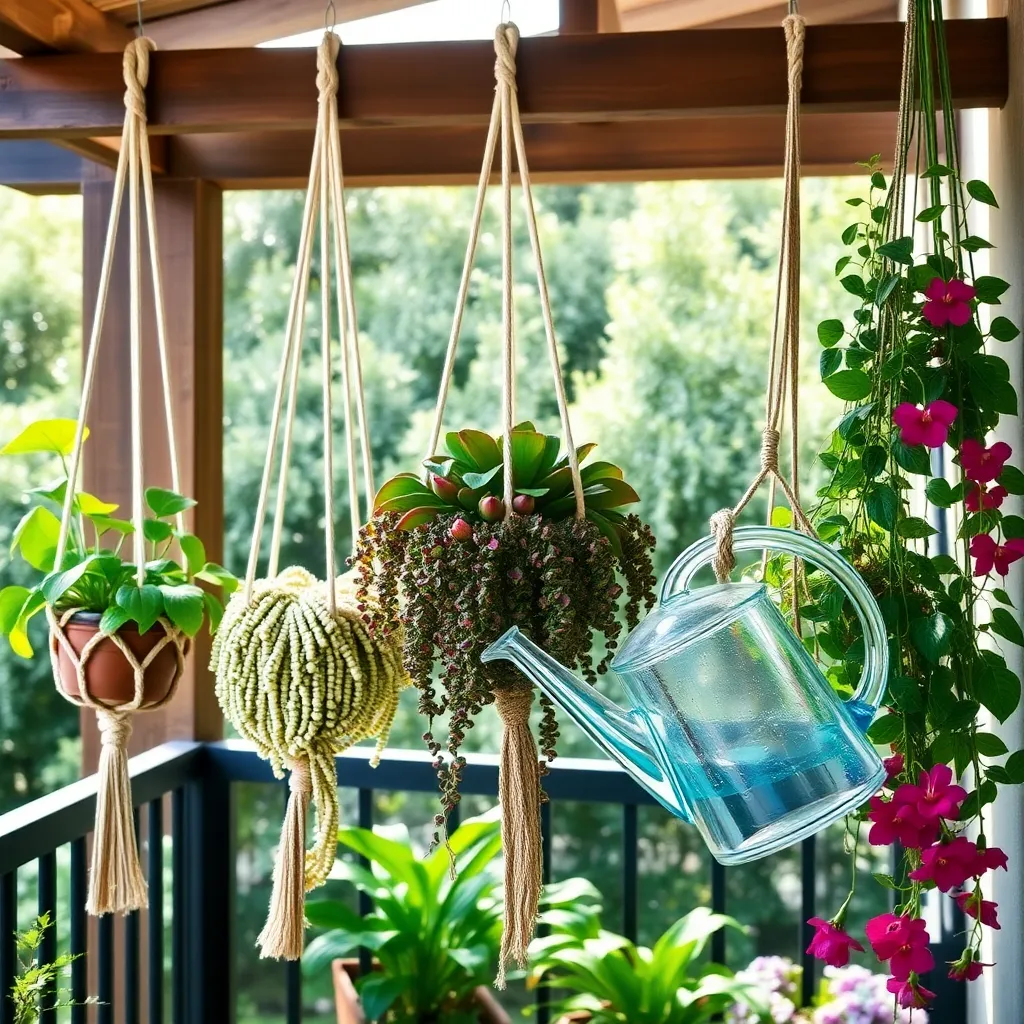Imagine transforming your living space into a lush, verdant sanctuary with the simple addition of fast-growing hanging plants. Whether you’re new to the world of gardening or a seasoned green thumb looking to expand your collection, these dangling beauties offer a quick and gratifying way to enhance your home or garden.
In our increasingly busy lives, finding joy in plants that require minimal ground space yet offer maximum impact can be incredibly rewarding. This article will guide you through seven fast-growing hanging plants that are both easy to care for and stunning to behold, providing both beginner and experienced gardeners with fresh inspiration.
You’ll learn about the unique characteristics of each plant, from their growth habits to their lighting and watering preferences, making it easy to select the perfect match for your environment. As you explore these options, you’ll discover that cultivating hanging plants can be a delightful and accessible endeavor, adding charm and vitality to any space they adorn.
Choosing the Perfect Hanging Spot
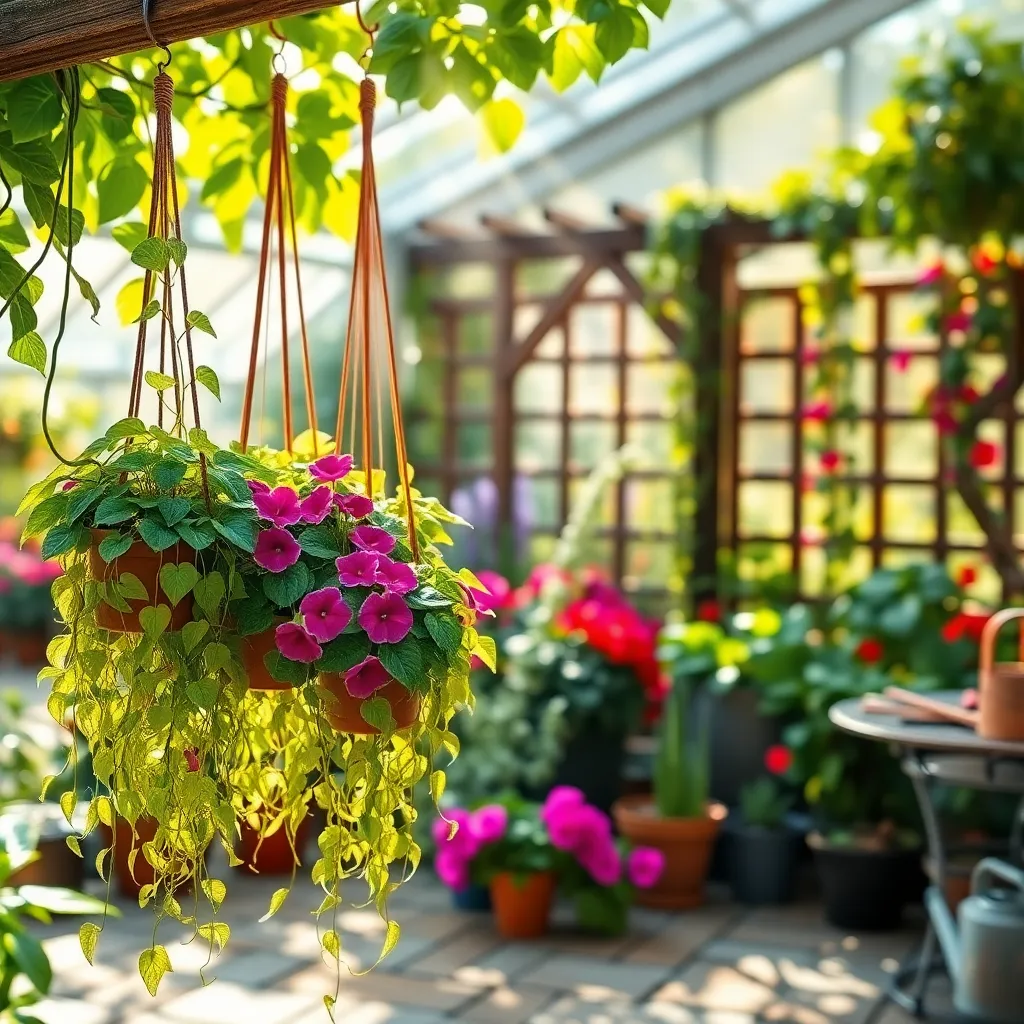
When choosing the perfect hanging spot for your plants, consider locations that receive adequate sunlight throughout the day. Most fast-growing hanging plants thrive in bright, indirect light, so a spot near a window or on a shaded patio can be ideal.
Think about the wind conditions in your chosen spot, as strong gusts can damage delicate hanging plants. To safeguard your plants, opt for a sheltered position or bring them indoors during particularly windy days.
Take into account the weight of the plant and its container when selecting a hanging spot. Ensure that the hook or bracket used is sturdy enough to support the full weight, preventing any accidents or damage to your plants.
For a touch of advanced care, consider the humidity levels of the area where your plants will hang. Plants like ferns prefer higher humidity, so positioning them near a bathroom or kitchen can provide an optimal environment.
Ideal Potting Mix for Growth
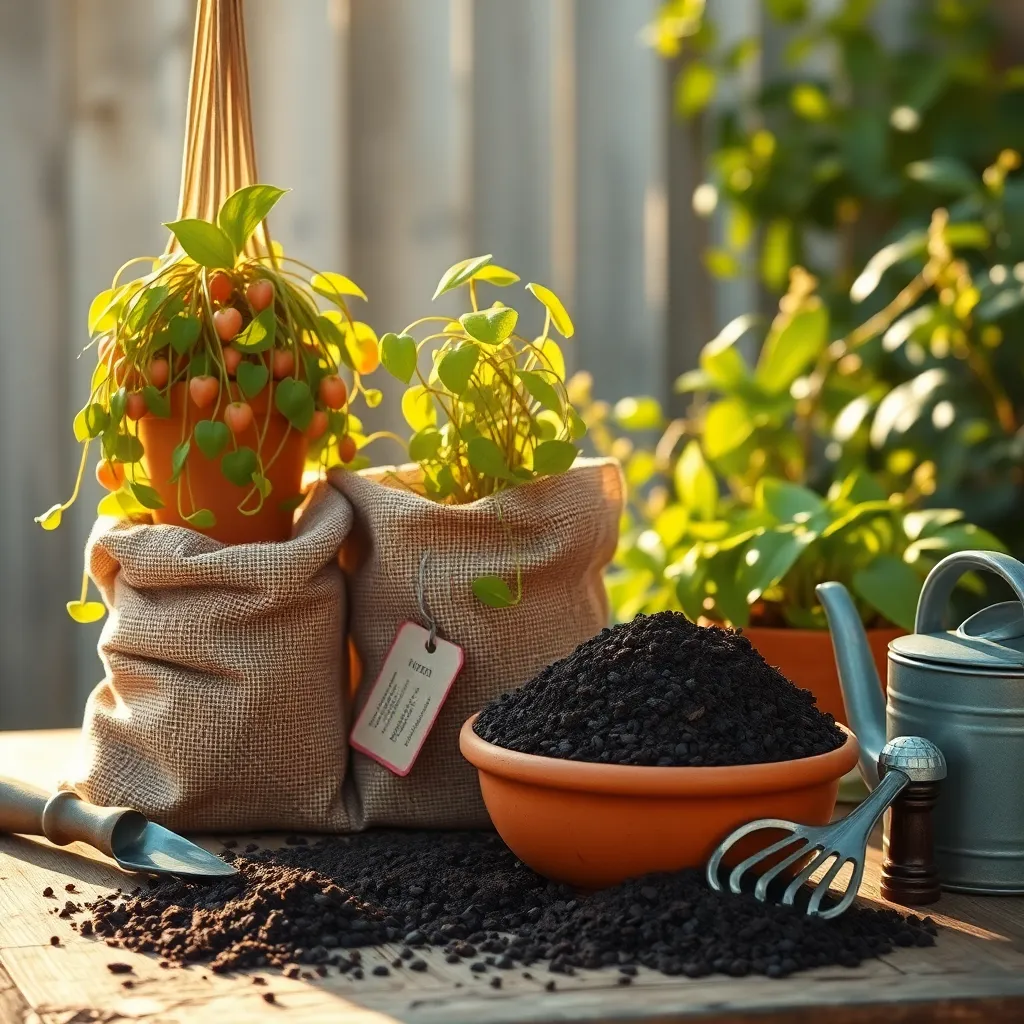
Creating the ideal potting mix is crucial for promoting the rapid growth of hanging plants. Begin with a base of high-quality potting soil, which provides the essential nutrients and drainage your plants need. Adding perlite or vermiculite to the mix can enhance aeration and drainage, preventing waterlogged roots.
Consider incorporating organic matter such as compost or peat moss to retain moisture while enriching the soil. These organic components help maintain a balance between moisture retention and drainage, which is essential for healthy root development. For those growing succulents or cacti, a special potting mix with extra sand is recommended to further improve drainage.
Regularly refreshing your potting mix every year or so can ensure your plants get a steady supply of nutrients. Over time, potting mix can compact and lose its effectiveness, making it crucial to replace or amend it. Always check the specific needs of your chosen plants to tailor the mix accordingly, as some may require more specific conditions.
For hanging plants that prefer a more acidic environment, such as ferns, adding pine bark or a specialized acidic mix can be beneficial. These amendments not only adjust the pH balance but also add organic content to the soil. Experimenting with different ratios of these components can help you discover what works best for your specific plant varieties and local climate conditions.
Watering Tips for Hanging Plants
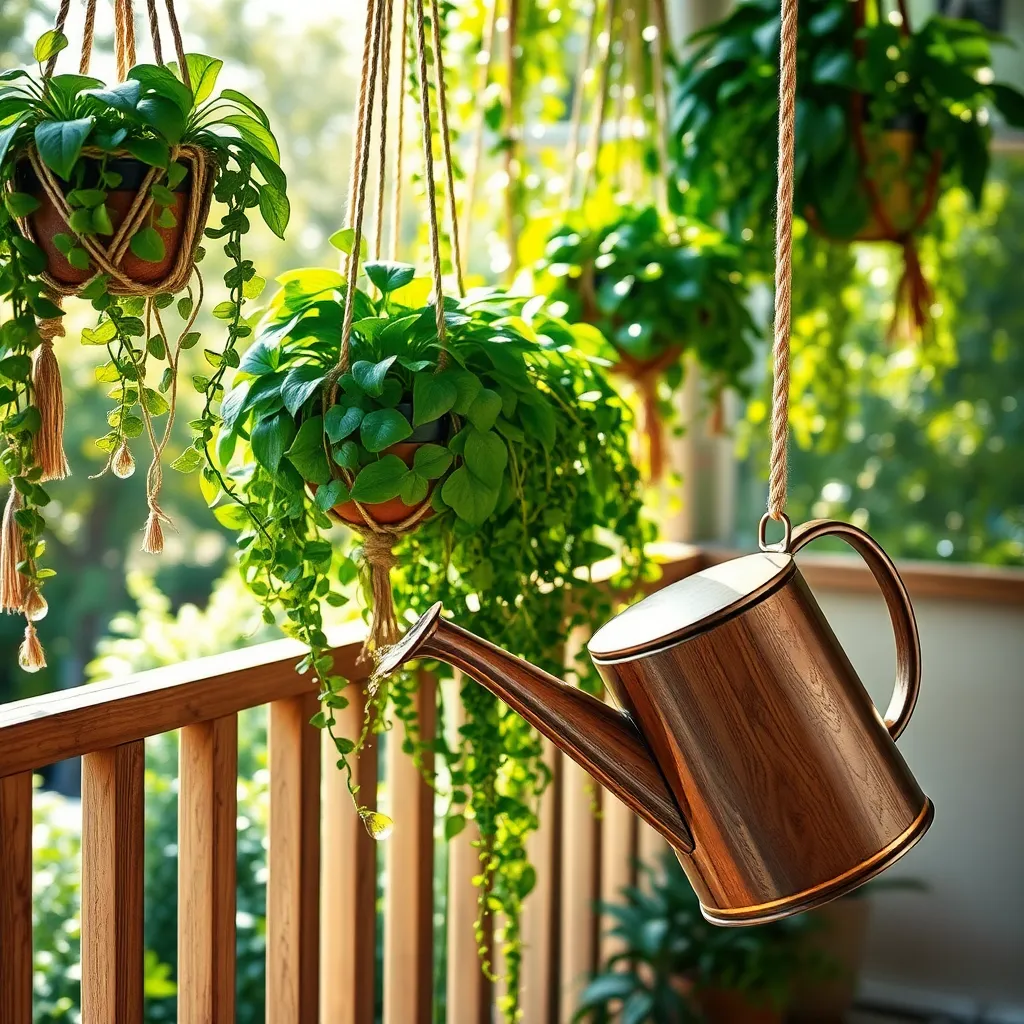
Hanging plants often require more frequent watering than their ground-dwelling counterparts due to increased exposure to air circulation. It’s important to check the soil moisture regularly by inserting your finger about an inch deep into the soil.
For beginners, a simple rule of thumb is to water when the top inch of soil feels dry. Using a watering can with a long spout can help you reach the soil surface without spilling water on the foliage.
Advanced gardeners might use self-watering pots or add water-retaining crystals to the soil mix. These techniques can help maintain consistent moisture levels, reducing the frequency of watering sessions.
Ensure that your hanging pots have adequate drainage to prevent root rot, which is a common issue with overwatered plants. Placing a saucer under the pot can catch any excess water, keeping your floors and furniture dry.
Consider the specific needs of your chosen plant species when establishing a watering routine. For instance, ferns generally prefer more humidity and frequent watering, while succulents like string of pearls thrive with less frequent, deep watering sessions.
Fertilizing for Quick Growth
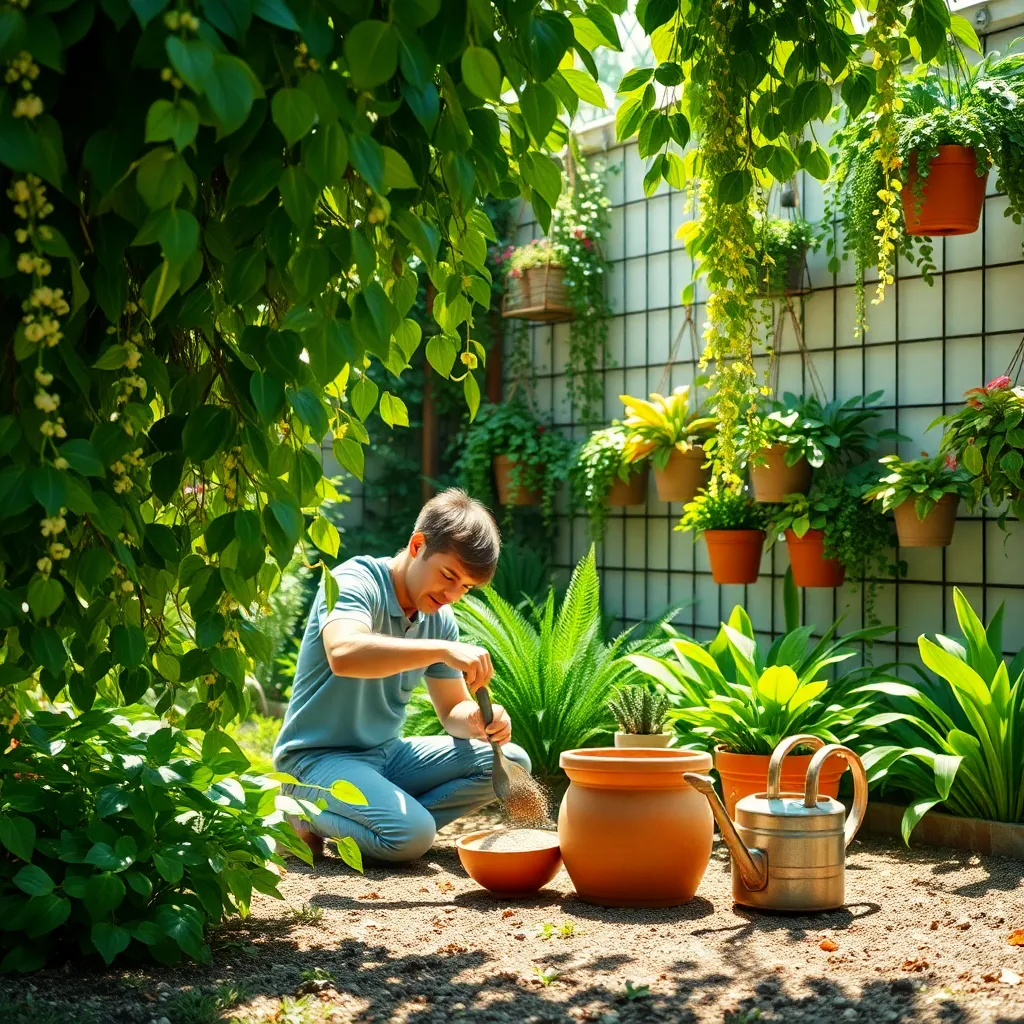
To encourage quick growth in hanging plants, choosing the right fertilizer is essential. Opt for a balanced, water-soluble fertilizer with an equal ratio of nitrogen, phosphorus, and potassium, such as 10-10-10, to promote healthy growth and vibrant blooms.
Application frequency is crucial for success; apply fertilizer every two weeks during the growing season. Dilute the fertilizer to half the recommended strength to avoid over-fertilizing, which can damage delicate hanging plants.
Consider the specific needs of your plants when choosing a fertilizer. For example, flowering plants like fuchsias benefit from a fertilizer with a slightly higher phosphorus content to enhance blooming.
Incorporating organic fertilizer options can also be beneficial. Use liquid seaweed or fish emulsion for a gentle, nutrient-rich boost that is less likely to cause fertilizer burn.
Advanced gardeners can experiment with slow-release fertilizers for convenience and a steady nutrient supply. These are particularly useful for busy gardeners who can’t frequently fertilize their hanging plants.
Pruning Techniques for Fuller Plants

Pruning is a vital technique for encouraging fuller, healthier hanging plants, and it starts with understanding the plant’s growth habits. For beginner gardeners, a simple rule is to prune just above a leaf node, which is where new growth is most likely to emerge.
To achieve a lush appearance, regularly trim back overgrown stems by about one-third of their length. This practice not only promotes bushier growth but also helps manage the plant’s overall shape and prevent it from looking leggy.
While pruning, keep your tools clean and sharp to avoid introducing diseases to your plants. It’s wise to sterilize your pruning shears with a solution of one part bleach to nine parts water before making any cuts.
For more advanced gardeners, consider the timing of your pruning: early spring is ideal for most plants to stimulate robust new growth. However, always research your specific plant species, as some may benefit from pruning at different times of the year.
Pest Management in Hanging Gardens
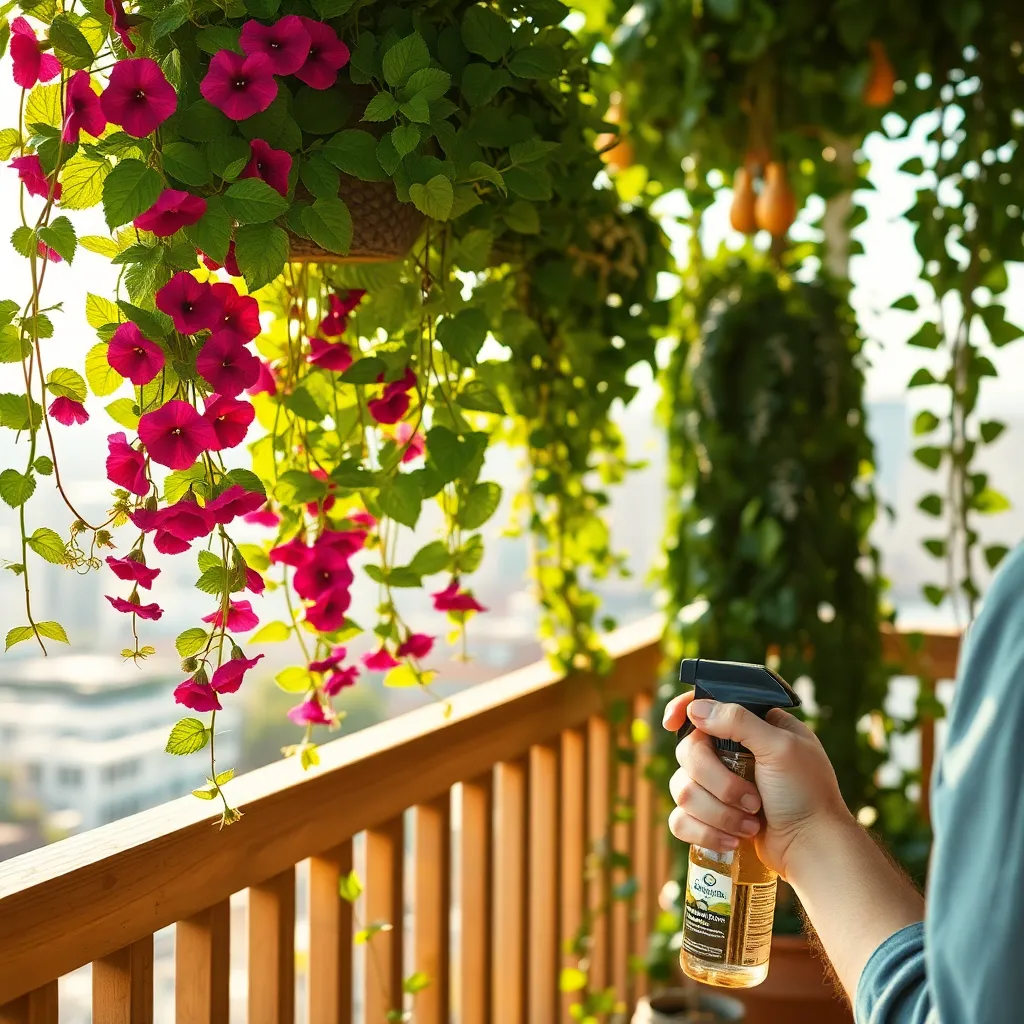
Managing pests in hanging gardens requires a strategic approach due to the unique growing conditions. Start by ensuring your plants have good air circulation and adequate light to help prevent infestations.
Regular inspection of your hanging plants is crucial to catching pest problems early. Use a magnifying glass to look for signs of common pests like aphids, spider mites, and whiteflies on the undersides of leaves.
For a natural pest control solution, consider introducing beneficial insects such as ladybugs or lacewings, which prey on harmful pests. Avoid chemical pesticides that can harm beneficial insects and disrupt the ecosystem of your garden.
Maintaining plant health is a key aspect of pest prevention. Ensure your plants are in well-draining soil and water them appropriately, as overly moist conditions can attract pests and lead to fungal issues.
Best Fast-Growing Varieties to Try
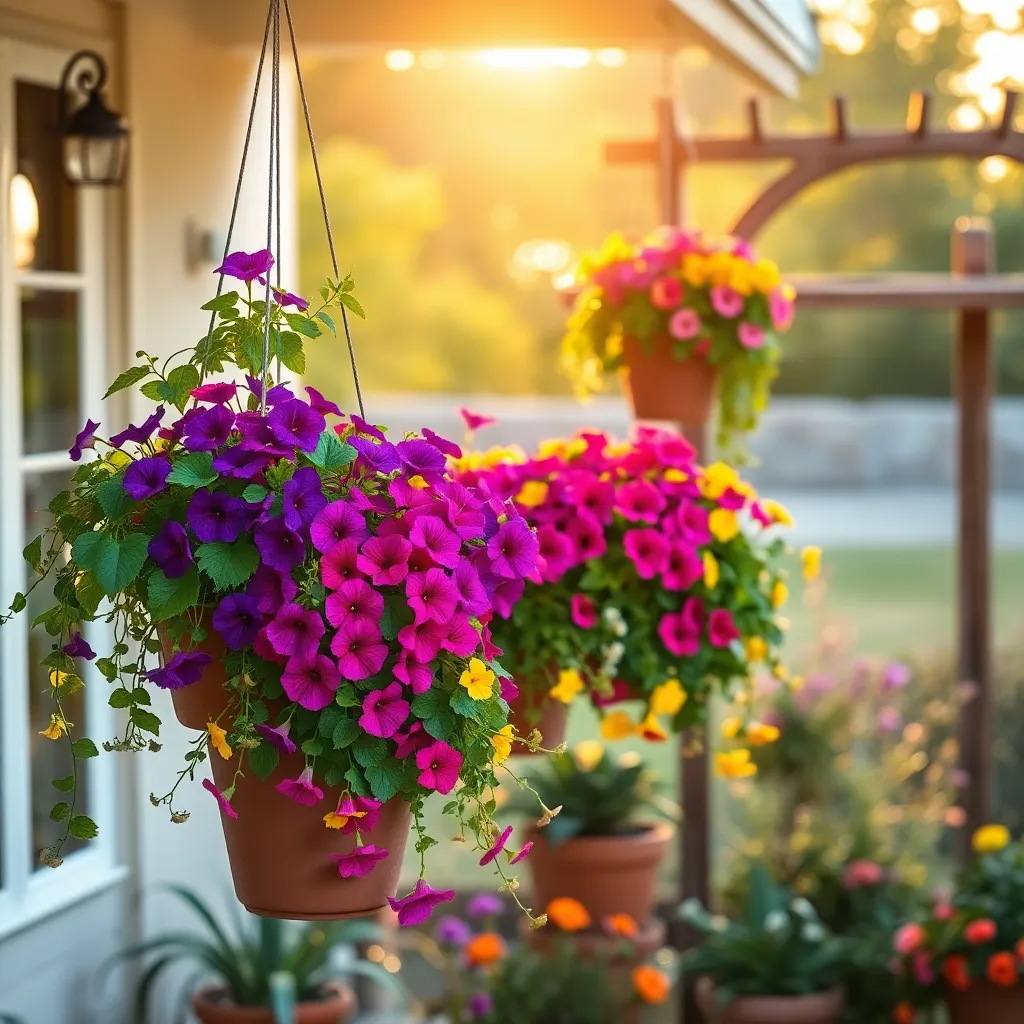
For gardeners eager to see rapid results, exploring fast-growing hanging plant varieties can be truly rewarding. One excellent choice is the Spider Plant (Chlorophytum comosum), known for its quick growth and adaptability to various light conditions.
To ensure optimal growth, plant your Spider Plant in a well-draining potting mix and water it thoroughly whenever the top inch of soil feels dry. For advanced care, consider using a balanced liquid fertilizer monthly during the growing season to boost its vibrant foliage.
Another fast-growing contender is the Boston Fern (Nephrolepis exaltata), which thrives in humid environments. Position your Boston Fern in an area with indirect sunlight and keep the soil consistently moist, but not soggy, for best results.
For those with more experience, maintaining humidity around your ferns can accelerate growth—this can be achieved by grouping plants or using a pebble tray with water beneath the pot. Regular misting can also help replicate the fern’s natural tropical habitat, encouraging lush frond development.
Beginners will find the Golden Pothos (Epipremnum aureum) exceptionally easy to grow, as it tolerates a range of light conditions. Place it in a hanging basket with a standard indoor potting mix and water when the soil is dry to the touch, allowing for some drying out between waterings.
Experienced gardeners might train their Pothos to climb or trail along shelves for added aesthetic appeal. Pruning the vines will encourage bushier growth and can be done anytime to maintain the desired shape and size.
Conclusion: Growing Success with These Plants
In exploring the vibrant world of fast-growing hanging plants, we’ve uncovered seven essential relationship concepts that mirror their lush growth and resilience. Just as the Pothos thrives with minimal care, simplicity in relationships can often lead to profound growth. The Spider Plant teaches us adaptability, a key to thriving in changing circumstances. String of Pearls highlights the beauty of patience, while the cascading beauty of the Boston Fern reminds us of the importance of consistent nurturing. The Heartleaf Philodendron embodies affection, the Maidenhair Vine showcases the strength of interconnection, and the English Ivy underscores the power of support and solidarity.
As you reflect on these insights, take a moment today to identify one relationship in your life where you can cultivate growth using these concepts. Perhaps it’s offering a listening ear or planning a shared experience that nurtures your connection.
Remember, relationships, much like plants, require care and attention to flourish. Bookmark this article as a go-to guide for nurturing your relationships, ensuring you have these insights at your fingertips. By embracing these principles, you’re planting the seeds for enduring relationship success, creating connections that grow stronger and more vibrant over time.


